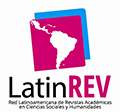Informe del Relator Especial sobre la extrema pobreza y los derechos humanos
FMI y protección social
Resumen
La Secretaría tiene el honor de transmitir al Consejo de Derechos Humanos el informe del Relator Especial sobre la extrema pobreza y los derechos humanos, Philip Alston, elaborado en cumplimiento de la resolución 35/19 del Consejo, que se ha centrado en el Fondo Monetario Internacional y su impacto en los sistemas de protección social.
Referencias
ABRAMS, A., (2017).“The IMF’s Role in Social Protection: FundPolicy and Guidance”, documento de antecentes, num. BD/17-01/01 (5 de Julio), Londres.
BABB, S. y KENTIKELENIS, A., (2018).“International Financial Institutions as Agents of Neoliberalism”, en The SAGE Handbook of Neoliberalism, D. Cahill yotros (eds.) (SAGE Publication) pag. 16 , Nueva York.
BAN, C. y GALLAGHER, K. (2015).“Recalibrating Policy Orthodoxy: The IMF since the Great Recession”, en Governance: An International Journal of Policy, Administration, and Institutions (vol. 28, num. 2, abril), pag. 141.
BARNETT, M. y FINNEMORE, M. (2004). Rules for the World: International Organizations in Global Politics (Cornell University Press), pag. 69, Washington.
BEETSMA, R. y otros, (2018).“Independent Fiscal Councils: Recent Trends and Performance”, documento de trabajo del FMI (marzo), pag. 3,Washington.
BROOME, A., (2015).“Back to Basics: The Great Recession and the Narrowing ofIMF Policy Advice”, en Governance: An International Journal of Policy, Administration, andInstitutions (vol. 28, num. 2, abril), pag. 161, Nueva York.
CORNIA, G., JOLLY, R. y STEWART, F. (eds.) (1987). Ajuste con Rostro Humano: protección de los grupos vulnerables y promoción del crecimiento, Nueva York.
DARROW, M., (2003). Between Light and Shadow: The World Bank, the International Monetary Fund and International Human Rights Law (Hart Publishing), Nueva York.
DAVID, G., (2018).“Los impactos de la austeridadapoyadapor el FMI sobrelos derechos de las mujeresenBrasil”, en Bretton Woods Observer (primavera), disponibleen: www. brettonwoodsproject.org/2018/03/impacts-imf-backed-austerity-womens-rights-brazil/, Nueva York.
DAVOODI, H. y otros, (2001).“Military Spending, the Peace Dividend, and Fiscal Adjustment”, IMF Staff Papers (vol. 48, num. 2), pag. 290, Londres.
ELBORGH-WOYTEK, K. y otros, (2013).“Las mujeres, el trabajo y la economía: Beneficios macroeconómicos de la equidad de genero”, Documento de análisis del personal técnico del FMI, Londres.
GHAZI, B., (2005). The IMF, the World Bank Group and the Question of Human Rights (Transnational Publishers), Londres.
GIANVITI, F., (2005).“Economic, Social, and Cultural Rights and the International Monetary Fund”, en P. Alston (ed.), Non-State Actors and Human Rights, pag. 135, Londres.
GONZÁLEZ, C. y otros, (2015).“Catalyst for Change: Empowering Women and Tackling Income Inequality”, IMF Staff Discussion Note, Londres.
GONZÁLEZ, C. y otros, (2015).“Fair Play: More Equal Laws Boost Female Labor Force Participation”,IMF Staff Discussion Note, (febrero).
GUPTA, S., DE MELLO, L. y SHARAN, R., (2000).“Corruption and Military Spending”, IMF Working Paper.
JUDT, T. (2005).Postguerra: unahistoria de Europa desde 1945 (Penguin Books), pag. 76.
KENTIKELENIS, A., STUBBS, T. y KING, L., 2016.“IMF Conditionality and Development Policy Space, 19852014”, en Review of International Political Economy (vol. 23, num. 4, 2016), pag. 556, Londres.
KIDD, S., 2018.“Mongolia and Kyrgyzstan lose out in their struggle with the IMF over the targeting of child benefits”, Development Pathways, 21 de febrero.
KOEHLER, Gabriele (2017).“The Politics of Rights-Based Transformative Social Policy in South and Southeast Asia”, en International Social Security Review (vol. 70, num. 4, 2017), pag. 107.
LAESSING, U. y AMARA, T. (2017).“Tunisia seen softening economic reforms to avoid unrest”, Reuters (4 de diciembre), Nueva York.
LAGARDE, C. (2017).“Stepping up theFightagainst Money Laundering and TerroristFinancing”, blog del FMI (26 de julio).
LUNDBERG, S. (2017).“The 2017 Report of the Committee on the Status ofWomen in the Economics Profession”, American Economic Association, 6 de diciembre de2017; y “Women and economics”, The Economist (19 de diciembre), Nueva York.
MC GARVEY, A. M.yWHAPLES, R., (2014).“Are Disagreements among Male and Female Economists Marginal at Best?”, Contemporary Economic Policy (vol. 32, num. 1, enero), pags. 111 a 132, Nueva York.
OCAMPO, J. A., GRIESGRABER, J. M., MARTIN, M. y COPLIN, N., (2017).“Are the Multilateral Organizations Fighting Inequality?”(Friedrich-Ebert-Stiftung, julio), pags. 10 y 11.
ORTIZ, I., CUMMINS, M. y KARUNANETHY K., (2017).“Espacio fiscal para la proteccion social y los ODS. Alternativas para ampliar la inversion social en 187 paises”, Extension de la SeguridadSocial Documento de trabajo num. 48 (Ginebra, OIT). Disponibleen: http://www.social-protection.org/gimi/gess/RessourcePDF.action?ressource.ressourceId=54496.
ORTIZ, I., CHAI, J. y CUMMINS, M., (2011).“Austerity Measures Threaten Children and Poor Households: Recent Evidence in Public Expenditures from 128 Developing Countries”, document de trabajo sobre política económica y social (UNICEF); y Abrams, “The IMF’s Role inSocial Protection”, pag. 18.
OSTRY, J., LOUNGANI, P. y FURCERI, D., (2016).“El neoliberalismo: ¿un espejismo?”, en Finanzas y Desarrollo (junio), Nueva York.
OSTRY, J., BERG, J. y TSANGARIDES, C. G., (2014).“Redistribution, Inequality, and Growth”, IMF Staff Discussion Note, num. 14/02.
RODRIK, D, (2006).“Goodbye Washington Consensus, Hello Washington Confusion?”en Journal of Economic Literature, vol. 44, num. 4 (diciembre), pags. 973 a 987.
SIMS, S., (2016).“Brazil passes the mother of all austerity plans”, The Washington Post, 16 de diciembre, Nueva York.
STEVENSON, J., (2000).“IFIs and military expenditures”, en Adelphi Papers (vol. 40, num. 336), pag. 29, Washington.
STUBBS y KENTIKELENIS, (2018).“Targeted Social Safeguards in the Age of Universal Social Protection: the IMF and Health Systems of Low-Income Countries”en Critical Public Health (vol. 28, num. 2), pág. 136 y 137, Nueva York.
STUBBS y otros, (2017).“The IMF and Government Health Expenditure: A Response to Sanjeev Gupta”, en Social Science & Medicine (vol. 181), pags. 202 a 204.
WALKER, A., (2009).“The International Monetary Fund returns”, BBC, 24 de abril, disponible en: http://news.bbc.co.uk/2/hi/business/8015979.stm.
WILLIAMSON,J. (ed.), (1990).“What Washington Means by Policy Reform”, en Latin AmericanAdjustment: How Much Has Happened?”(abril), Nueva York.
WILLIAMSON, J., (2003).“An Agenda for Restarting Growth and Reform”, en After the Washington Consensus: Restarting Growth and Reform in Latin America,”KUCZYNSKI, P. y WILLIAMSON, J., eds.(marzo), Nueva York.
Descargas
Publicado
Número
Sección
Licencia
Todo el material publicado en la revista lo hace bajo una licencia Creative Commons de Reconocimiento-No Comercial-Sin Obra Derivada (CC BY-NC-ND) 4.0



.jpg)






























